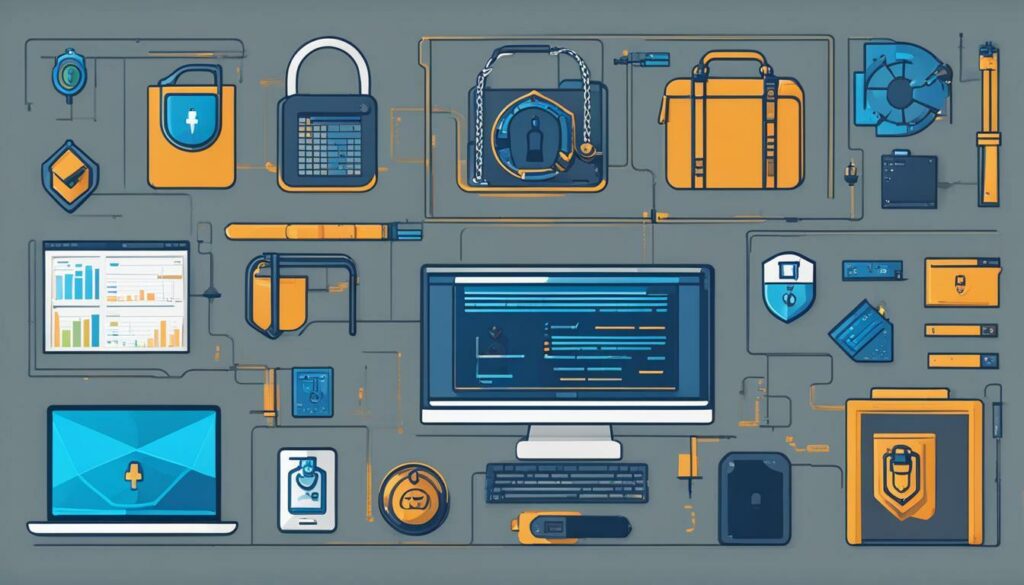This article serves as a comprehensive guide to data loss prevention (DLP) vendors and their software solutions, with a focus on the importance of data security in the current cybercrime landscape. Particularly during the COVID-19 pandemic, organizations need effective DLP solutions to protect their valuable data from potential breaches and leaks. DLP software plays a crucial role in discovering and analyzing content to identify patterns or expressions of sensitive data. By implementing robust DLP solutions, organizations can prevent data loss and ensure the security of their confidential information. In this guide, we review two top DLP vendors: Symantec and Forcepoint.…
Author: Adrian
Data loss prevention is crucial for remote workers to protect sensitive information and ensure secure remote work environments. With the rise of distributed workforces, traditional security measures are no longer sufficient in safeguarding data. Remote workers face various data loss threats, including home office security limitations, poor visibility of data movement, increased phishing scams, and challenges in maintaining backups and recovery. To adapt DLP strategies for remote work scenarios, organizations need to create a culture of security and prioritize data discovery and classification. It is essential to apply data governance policies across operating systems to ensure comprehensive protection. Real-time monitoring…
Real-time IDS alerts are crucial for maximizing network security and preventing unauthorized access or attacks on your network. Intrusion detection systems (IDS) play a vital role in monitoring network traffic and detecting signs of potential security breaches. By analyzing network packets and identifying anomalies or known signatures of threats, IDS can provide real-time threat detection. There are different types of IDS available, including network-based and host-based systems. Network-based IDS monitor network traffic for a broad range of attacks, while host-based IDS focus on specific files and logs on individual PCs. This multi-layered approach ensures comprehensive threat protection. Signature-based detection is…
Mastering SIEM alert configurations is crucial for enhancing security in organizations. SIEM systems generate alerts based on predefined rules and correlation algorithms, highlighting potential security incidents that require immediate attention. SIEM alerts can be triggered by various events such as intrusion attempts, anomalous user behavior, system errors, data breaches, and compliance violations. SIEM systems collect and analyze data from different sources, and when specific events meet the defined criteria, an alert is triggered, providing essential details about the incident. It is important to manage SIEM alerts effectively to avoid alert fatigue and ensure the security operations team can focus on…
Data loss prevention (DLP) is a crucial aspect of data security, and implementing the right practices can significantly mitigate the risk of data breaches. With the average cost of a data breach reaching $3.86 million worldwide, organizations must prioritize data protection strategies and measures to safeguard their valuable information. Key Takeaways: Implementing data loss prevention best practices is essential for protecting sensitive data and reducing the risk of breaches. Identifying and classifying sensitive data helps organizations implement effective data protection strategies. Encryption plays a vital role in data loss prevention, safeguarding files from unauthorized access. Enabling access controls limits unauthorized…
Data loss prevention (DLP) is a crucial aspect of data security for financial institutions. Implementing robust DLP strategies is essential for safeguarding sensitive financial data and preventing data breaches. By protecting against unauthorized access and data leaks, financial institutions can maintain the trust of their clients and ensure the integrity of their operations. Key Takeaways: Data loss prevention (DLP) is vital for protecting sensitive financial data and preventing data breaches in the finance industry. Implementing user behavior analytics can help identify and flag suspicious actions that may lead to data leaks or security breaches. Security education and awareness training is…
In today’s digital landscape, protecting sensitive data is crucial for businesses. Cloud data loss prevention services offer a reliable solution to prevent data breaches and ensure the safety of your valuable information. Key Takeaways: Cloud data loss prevention services provide a robust solution for businesses to protect sensitive data. Implementing cloud DLP services helps mitigate cybersecurity risks, including insider threats and accidental exposure of sensitive information. Cloud DLP services enable organizations to comply with data privacy laws and regulations. Effective implementation of cloud data loss prevention requires prioritizing and classifying data, gradually rolling out the program, and leveraging data loss…
Security Information and Event Management (SIEM) tools are essential for organizations looking to enhance their security strategy and protect their assets and data from potential threats. SIEM tools can aid in achieving regulatory compliance and enable swift response to security incidents. However, implementing SIEM correctly and optimizing its configuration are crucial for effective protection. By following SIEM best practices and implementing security measures, organizations can maximize the capabilities of these tools and strengthen their overall security posture. Key Takeaways: SIEM tools are crucial for organizations to enhance their security strategy and protect their assets and data. Implementing SIEM correctly and…
Welcome to our comprehensive guide on the IAM user lifecycle, where we delve into the essential aspects of user management and best practices. In today’s digital landscape, managing user identities and their access to resources is crucial for organizations to maintain a secure and controlled IT environment. IAM, or Identity and Access Management, plays a vital role in achieving this objective. IAM encompasses various processes, such as creating and managing user accounts, assigning access privileges, and ensuring secure authentication. By implementing IAM best practices, organizations can streamline user management, enhance security, and mitigate risks. Throughout this guide, we will explore…
Data loss prevention (DLP) is a crucial strategy for protecting sensitive information in today’s digital landscape. It involves implementing a data handling policy, classifying data based on risk levels, and enforcing policies to prevent data leaks. Modern DLP solutions offer pre-built policy templates to address various compliance requirements, providing convenience and efficiency for organizations. Educating employees on data security, providing reporting and analysis for vulnerability identification, and mitigating data loss risks are also essential components of an effective DLP strategy. By utilizing data loss prevention policy templates, organizations can enhance their data protection efforts and safeguard critical information. Key Takeaways:…











